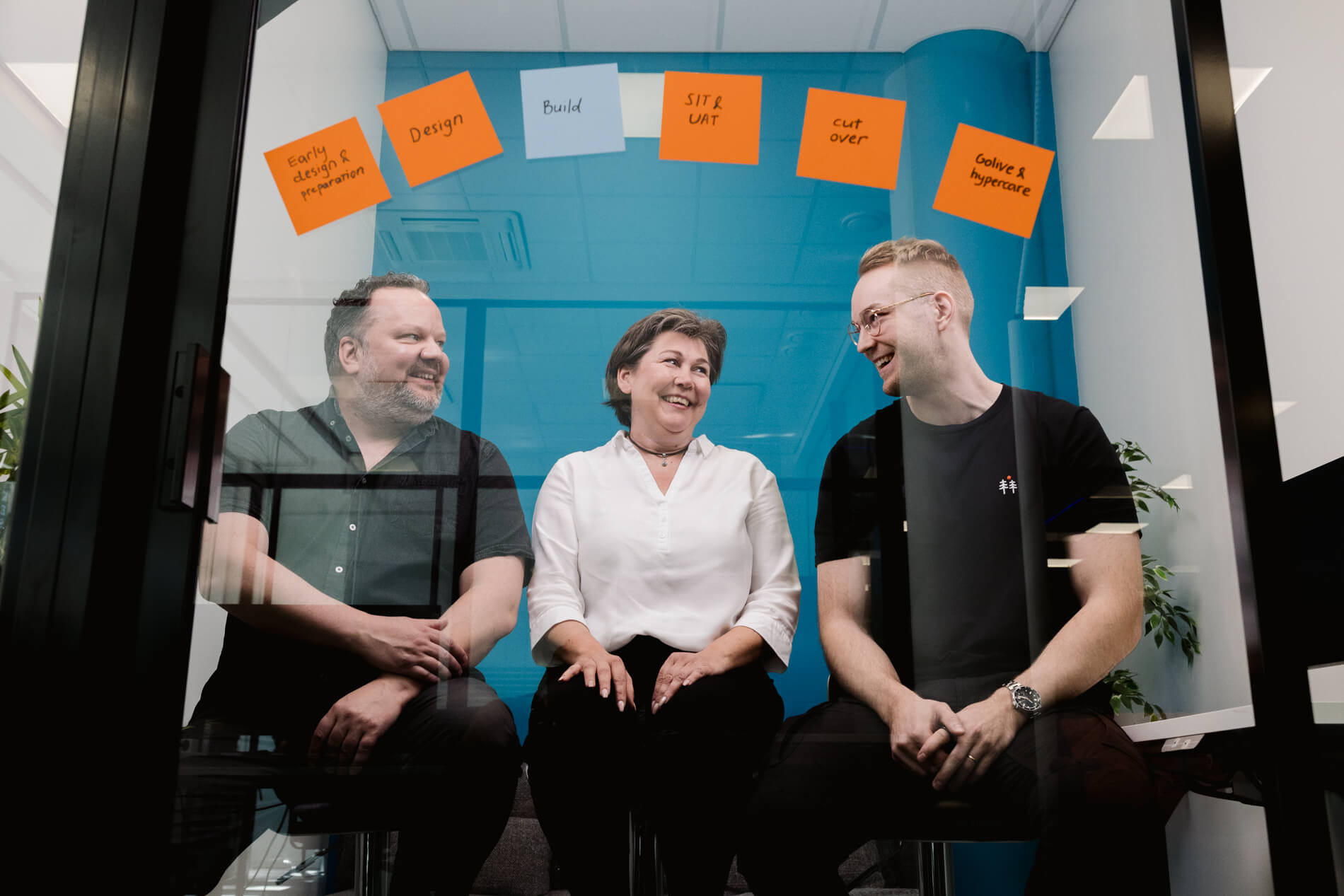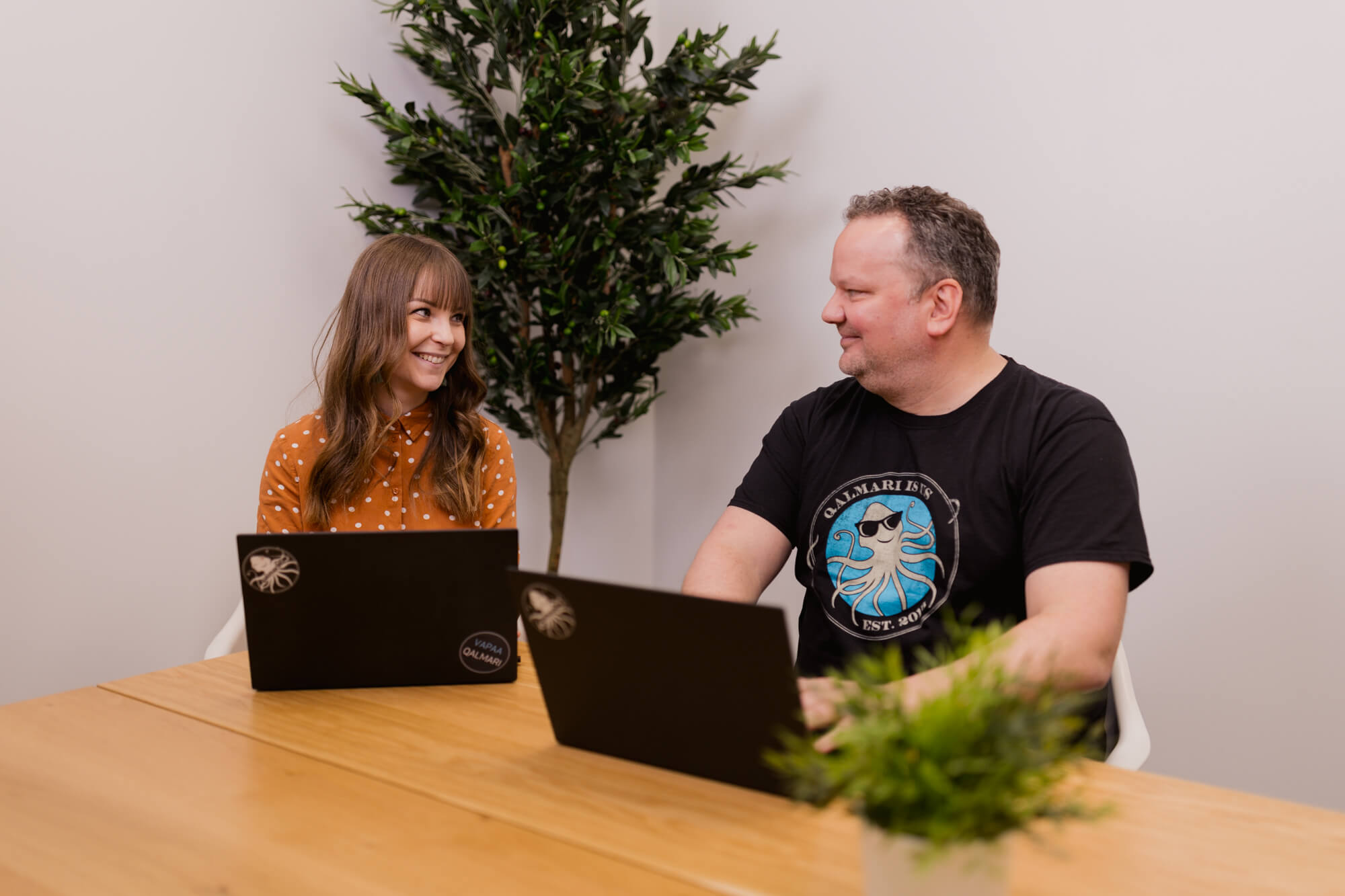Program Engineer
Orion Pharma
Suunto’s SAP transformation started after a company acquisition. This required a gradual carve-out from the former parent company’s systems. In addition, the goal was to upgrade the outdated SAP ECC system and move to SAP S/4HANA.
The project had a challenging starting point. Two earlier system renewal projects had been left unfinished, and the tight schedule added extra pressure.
Despite the challenges, Suunto’s team carried the renewal through with determination. This time, the project also included Qalmari’s expert Niina Simoska, who joined as a test manager bringing SAP Cloud ALM expertise. Over time, her role expanded to broader SAP advisory and project support.
From carve-out to S/4HANA in three phases
The renewal was carried out in three phases: first, a carve-out from the former parent company’s systems; second, a transition to Suunto’s own ECC environment; and third, an upgrade to SAP S/4HANA.
The key metrics for the project were staying on schedule and within budget. The plan was to reuse as much as possible and build a solution that met the minimum required functionality.
A sparring partner who built trust
The project involved Suunto’s team, an external project manager, the implementation partner, and Qalmari.
“Soon after Qalmari joined the project, it became clear that they knew what needed to be done and were genuinely there to help and support us. That sent an important message to our teams and created confidence that the project could succeed,” says Riitta Knuuttila, Director of Customer Logistics.
“When Qalmari, the new project manager, and the new implementation partner came on board, it created a sense of confidence that we finally had the right people to get the project over the finish line,” confirms Niina Sappinen, Vice President of Finance.
As the project progressed, Qalmari’s role expanded from testing and Cloud ALM expertise to day-to-day support and project sparring. They helped break down the large project into manageable parts, and tracking these milestones helped keep the project moving forward.
“The intermediate targets and breaking the project into parts created just the right kind of pressure. When we knew what we had to reach, it meant the next phase had to be completed by a certain point,” describes Knuuttila.
If the schedule looked like it might slip, Qalmari brought it up directly and offered concrete help to get things back on track. “Niina was firm enough to demand progress, but it was always clear that she was there to support the team and working for us,” praises Knuuttila.
Translating between business and tech
Qalmari’s understanding of Suunto’s business helped them serve as a bridge between Suunto and the technical implementation partner. Throughout the project, Suunto always knew what was happening, why it was happening, and what needed to be done to move forward.
“While deep SAP expertise wasn’t the key requirement, understanding the use cases and the overall picture was essential. Qalmari clearly understood both the business needs and the system side,” says Knuuttila.
“Even when I explained detailed topics, like financial processes, Niina always seemed to understand, and also the broader business context and need,” confirms Päivi Uljas, Group Financial Controller.
Qalmari ensured communication and coordination within a distributed project team working across time zones, with the help of SAP Cloud ALM for task monitoring and project management.
Updating testing and introducing SAP Cloud ALM
Previous projects showed that the earlier testing model no longer met the needs, and a new approach was required. Suunto’s team took action and, with Qalmari’s support, revised their testing practices to focus on real business processes instead of transactions.
As the project moved into its third phase, the use of SAP Cloud ALM expanded beyond testing and defect management to include process documentation. Traditional blueprints were still used as important documentation from a business perspective, but complementary process descriptions were also created directly in SAP Cloud ALM. This provided easily accessible process documentation and clear requirements for both the implementation partner and testing.
The tool seemed complicated at first, but it became easier once Qalmari’s expert provided hands-on guidance on where to go and what to do.
Drawing on their experience, Qalmari was able to anticipate likely issues. In daily meetings with the test team, the situation, current problems, and next steps were summarised to keep the entire project team informed.
“I especially remember the testing during the final weeks before go-live. It was great to see how determined Niina was in guiding the team through it,” recalls Sappinen.
A partner the team didn’t want to let go
Originally, Qalmari was only meant to be involved in the first phase of the project. The collaboration worked so well that users strongly requested that Qalmari continue.
“The first phase had gone smoothly, and the pressure from users to keep Qalmari involved was clear,” says Sappinen. With a tight schedule, there was no room for failure, and someone familiar with both the Suunto team and the project was needed.
“It was easy to continue, since we had already seen that the collaboration worked well,” Knuuttila describes.
Results and lessons for the future
Suunto’s story shows that even complex SAP projects can succeed when the right people are in the right roles. At the heart of this success was Suunto’s skilled team, who had the determination to try again, and this time, saw it through. Qalmari’s expert supported the team with firm guidance and helped them stay on track throughout the transformation.
For other companies starting similar SAP projects, Sappinen emphasises the importance of a realistic timeline and listening to key users when building it. Planning and testing are always worth the effort. “It’s rare to hear anyone say a project spent too much time on either,” Knuuttila notes.
The choice of partners is equally crucial. “You need to find a provider who understands your business processes and, of course, the right project manager. If the project manager doesn’t take ownership of testing, a separate test manager worked extremely well for us,” says Sappinen.
As a result, Suunto now independently manages its SAP environment, with significantly improved capability to maintain and develop the system.
Next on the horizon is introducing more integrations, and with SAP S/4HANA, possibly enhancing reporting and exploring the use of AI.



